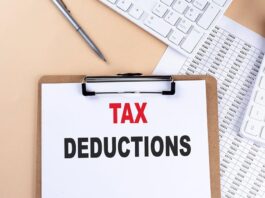Dearness Allowance is money that a government employee receives as a part of his/her salary. The government provides this allowance to fight rising inflation and act as a cushion that protects the employee from rising food and commodity prices.
It is the percentage of your basic salary which is decided by the Government and depends on the location of the individual. The concept of this allowance is to reduce the cost of living for the Government employees.
This makes the location of the employee an important part using which you can determining your Dearness Allowance. There are three categories of the locations used by the government to determine the Dearness Allowance, which are as follows-
- Urban Areas
- Semi-Urban Areas
- Rural Areas
The salary structure in government jobs comprises various elements that collectively contribute to the formation of overall compensation and benefits.
If you’re keen on understanding your total remuneration, including salary and additional perks, a key starting point is gaining knowledge about Dearness Allowance.
In this article, we will discuss what is DA or Dearness Allowance, the calculation of dearness allowance, types of dearness Allowance, and much more.

Table of Contents
Types of Dearness Allowance
The following are the types of dearness allowance-
Industrial Dearness Allowance
Industrial Dearness Allowance or IDA is an allowance that is provided to the employees of the public sector units. The Government of India has many PSUs or Public Sector Units that employ many people with both state and Central government owning their PSUs. Recently, the Government increased the IDA of the PSUs by 5% for all board-level executives, officers, and staff members of the Central PSUs. The IDA is set by the government and is updated every quarter as per the Consumer Price Index (CPI).
Variable Dearness Allowance
Variable Dearness Allowance or VDA is an allowance that varies every six months. This benefit is provided to the Central Government employees and changes as per the fluctuation of the Consumer Price Index (CPI).
The VDA has three components which are as follows-
- Consumer Price Index (CPI)
- Base Index
- Variable DA
The VDA is fixed until the minimum wages are revised by the government similar to the based index. The only thing that keeps on changing is the Consumer Price Index (CPI).
Calculation of Dearness Allowance
The following is the formula to calculate the Dearness Allowance-
For Central Government employees:
Dearness Allowance % = ((Average of AICPI (Base Year 2001=100) for the past 12 months -115.76)/115.76) *100
For Central public sector employees:
Dearness Allowance % = ((Average of AICPI (Base Year 2001=100) for the past 3 months -126.33)/126.33) *100
Where AICPI stands for All-India Consumer Price Index.
For Pensioner
The pensioner’s pension is also subject to change when the pay commission introduces a new salary structure. If the pensioners are re-employed, they cannot get DA allowance if the pay of the new job is fixed or time scale.
Whenever a pay commission introduces a new salary structure, the pension for retired public-sector employees is revised.
When DA increases, the corresponding surge is reflected in the retired public sector employees’ pensions. This applies to both family and regular pensions.
However, in some other cases, re-employed pensioners may get DA which is limited to their last drawn pay.
DA will not be paid if the pensioner is re-employed in a foreign country but would be eligible for receiving the DA in case he/she lives in a foreign country.
How is DA Treated Under Income Tax?
Dearness Allowance is a taxable part of your salary and is deducted at source or TDS deduction. As per the Income Tax of 1961, it is mandatory to declare the tax liability of DA.
FAQ
DA stands for Dearness Allowance which is a part of the salary provided to the Government employees.
Yes, Dearness Allowance or DA is taxable and will be considered for taxes.
The Dearness Allowance is revised every 6 months as per the Consumer Price Index (CPI).
No, Dearness Allowance does not apply to the Private Sector employees.
DA is calculated on the basic pension without commutation and the employees tend to receive a certain percentage of the original pension as Dearness Allowance.
House Rent Allowance is an allowance offered to both public and private sector employees and Dearness Allowance is an allowance which is offered to Government Employees only.
I’m Shiv Kumar, a graduate with a passion for finance, marketing, and technology. My journey into finance started with a desire to understand money management and investing.
Our main goal is to empower individuals through financial education. We believe that everyone should have the opportunity to build a strong financial foundation. Whether you’re a seasoned investor or just getting started, we provide articles, guides, and resources to help you navigate the financial landscape.
I invite you to join our community of financially savvy individuals. Feel free to ask questions, engage with our content, and explore the topics that matter to you. Together, let’s take control of our financial futures.



